Meet the Automotive Masters Ushering in a New Era of Coachbuilding

- Oops!Something went wrong.Please try again later.
The art of coachbuilding was left in the rearview after World War II, when the demand for cars boomed along with the population. The growing expectation of instant gratification left little room for painstakingly hammering out car bodies over wooden bucks, or customizing an interior’s trim to sate a buyer’s penchant for pomegranate and mother of pearl. Yet as today’s automobiles attain rarified levels of performance and luxury, true exclusivity comes down to customization, which means that demand for tailored bodywork is back. Here are just three of the current masters in coachbuilding’s renaissance.
Ahead of the Curve: Icon 4×4
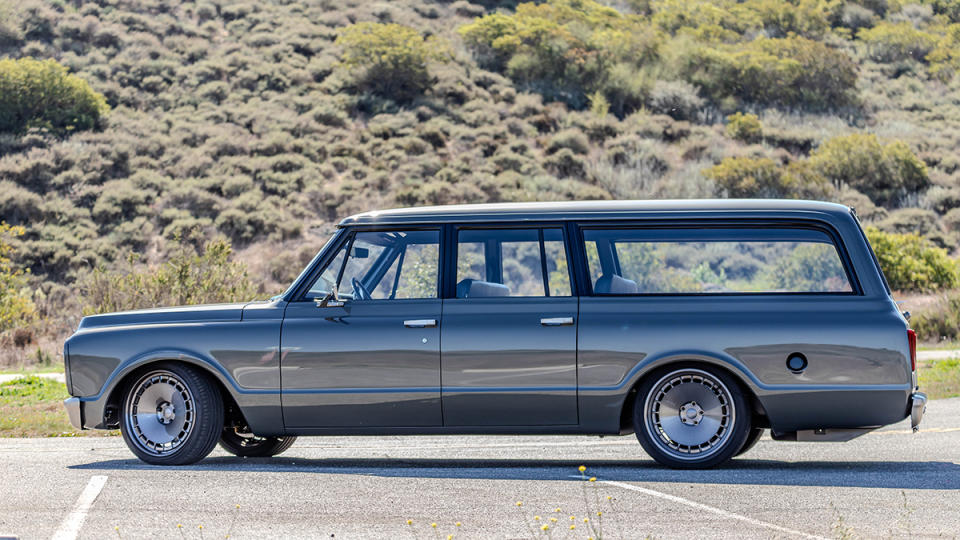
Back in 1996, Jonathan Ward anticipated the demand for meticulously restored Toyota Land Cruisers when he founded TLC4X4 along with his wife, Jamie. His Los Angeles–based Icon 4×4, launched a decade later, was similarly early to the spare-no-expense restomod market, predating a number of high-profile outfits including Singer Vehicle Design. Which might suggest a man keenly attuned to trends, yet the 53-year-old former actor insists the business was sparked by a simple case of creative restlessness. “I sequestered [with] a key employee in a 1,200-square-foot part of our old shop in Van Nuys, locked the door, and played killer music,” Ward recalls. With the goal of working a nagging idea out of his head, he transformed a Toyota FJ40 into a rigorously executed and exquisitely detailed postmodern take on the workaday sport ute.
More from Robb Report
Turkish Police Just Seized 23 Luxury Cars Worth $3.5 Million-and Are Now Using Them in Their Fleet
Inside the Unexpected Collaboration Between Ducati and Bentley
The passion project succeeded at blowing off steam but left him emotionally and financially depleted. He asked his mentor, former Gap CEO Mickey Drexler, whether it was better to market his creation as a one-off or dumb down the process and manufacture for the masses. Drexler urged Ward to stick to his original instinct with a pep talk straight out of Field of Dreams: “If you build it,” he said, “they will come.”
Perhaps to prove himself correct, when the first Icon was eventually built, Drexler bought it. But the sale was followed by commissions from David Letterman, and it soon became clear that Ward had once again understood a nascent demand. “There were lots of people who wanted the personality, the function, the charm, the design character, the individuality [of a classic] but had no patience for the martyrdom that goes with vintage cars,” Ward explains.
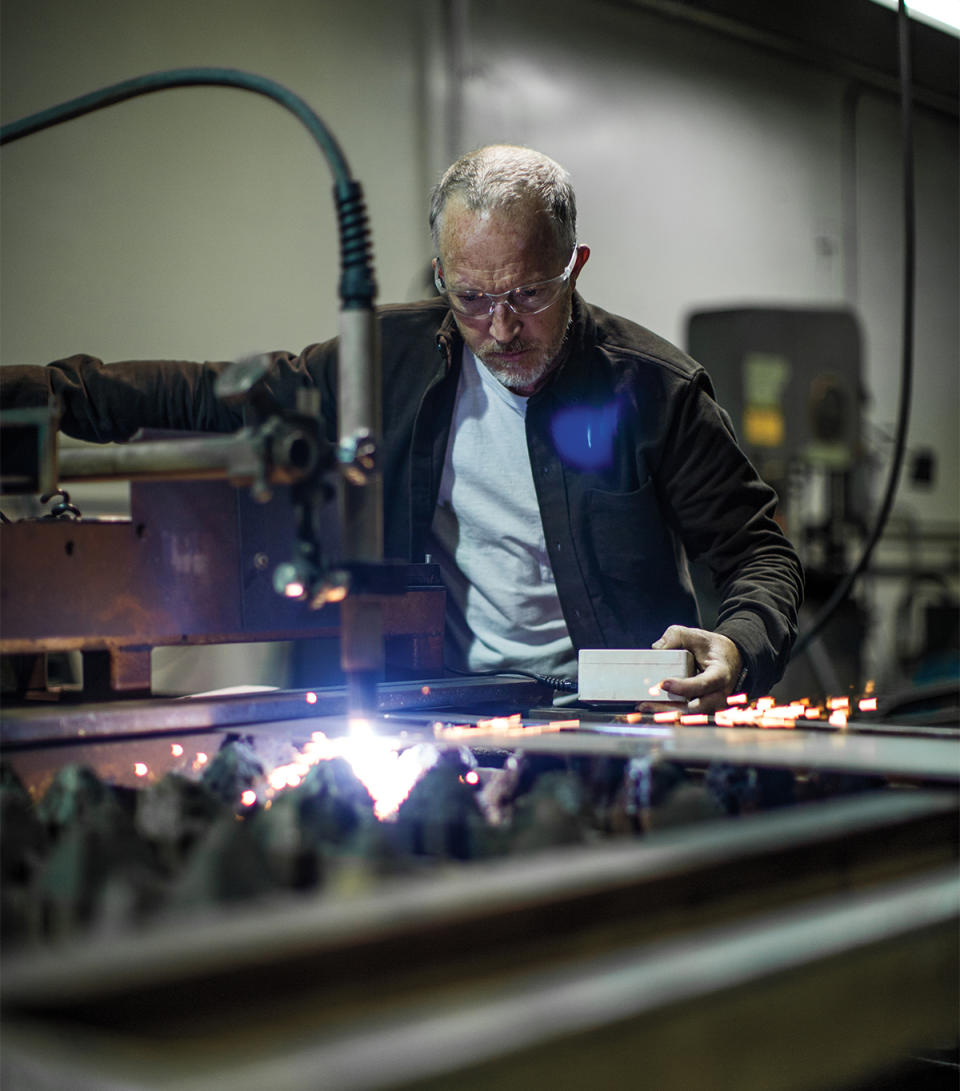
Creative impulses eventually led him to explore beyond pristine finishes, building a 1954 DeSoto Powermaster Wagon that appeared decrepit but was laden with top-tier enhancements: the alter ego to his core product of immaculately rendered but fundamentally old-school machines. “I wanted something with style and character, without the preconceived notion of money,” he says, describing what became his Derelict line of customs.
The cars all had a distinct ethos—essentially “I could take it anywhere and just drive the shit out of it,” Ward says—and looked like they’d been abandoned in the desert for years despite having modernized chassis, engines, and suspension components.
While the foundation of Ward’s business is composed of cult classics (Toyota FJs, Ford Broncos, Chevrolet Thriftmasters, and the like), he relishes unique coachbuilt projects—sometimes against the advice of Jamie and his COO, Sherif Yassa. With Ward’s explanation, it’s quickly apparent why. Established builds like the FJ and Bronco, he says, are “locked in CAD, and 95 percent of the widgets, brackets, and components are contract-built domestically by aerospace manufacturers so they’re repeatable, accurate, trusted, proven.” One-offs, on the other hand, are “brutally expensive and inefficient, a time suck, talent suck, square-footage suck, resource suck.” They are also, he adds, “my happiest place.”
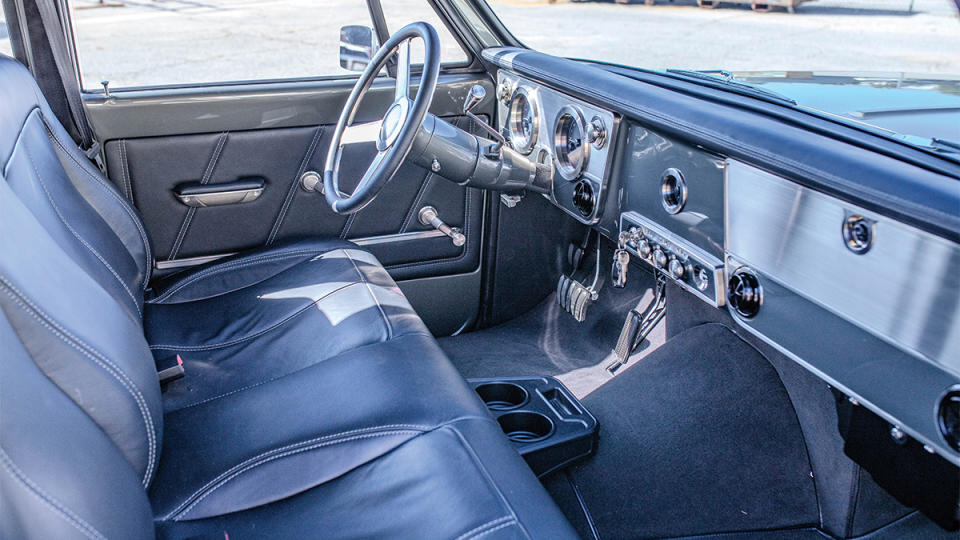
One such challenge recently came from a valued client who wanted a massive—and massively powerful—SUV from the 1970s. Ward’s curiosity was piqued. “What if Mies van der Rohe had been on the team for the concept vehicle? What would that influence, and how would it be realized?” The answers wound up woven into everything from the grille to the mirrors to even the dome lights. Ward is known for sparing no effort on even the smallest detail, and so it was with the vehicle’s drastically reduced panel gaps and shiny plastic finishes replaced by machine-chromed brightwork. What started life as a poorly built Chevy Suburban was transformed into a hulking, brutalist vision of hot-rodded Americana with enough horsepower under the hood to go toe-to-toe with an early Bugatti Veyron.
The project also meant getting Ward and his team out of their comfort zone in order to meet the client’s goal of having a 1,000 hp truck. Then again, pushing the needle is what continues to motivate the artist in him. “I know myself well enough,” he says. “It’s got to stay true to the purity of the vision I originally had or I’m just not going to give a damn.” —Basem Wasef
Gold Standard: Bentley Batur
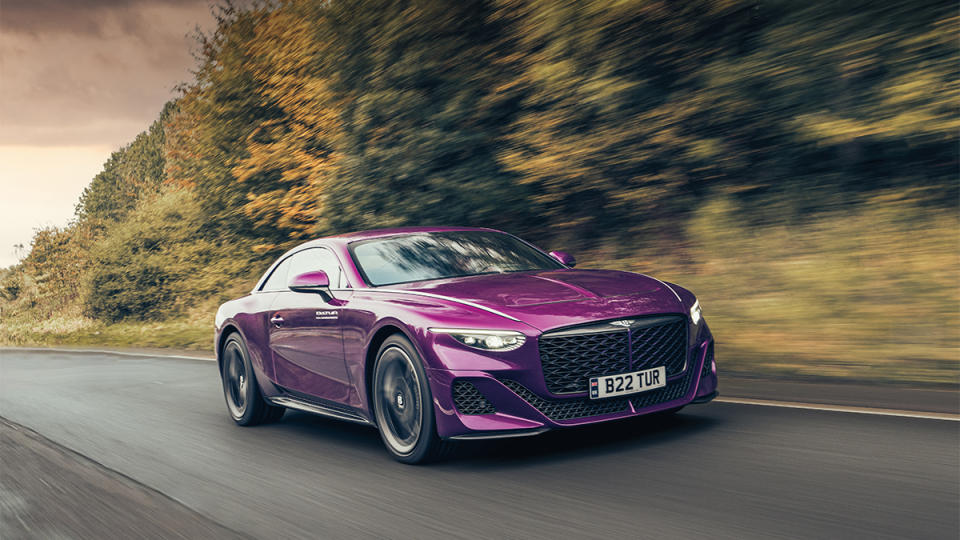
The story of Bentley’s coachbuilding arm dates back centuries and includes the Mulliner family’s contract to build stagecoaches for the Royal Mail in 1760. In the 1920s, Mulliner became renowned for its rebodied Bentleys, going on to become part of the British marque itself in 1959.
Today, most of Mulliner’s work focuses on adding personal touches—a bespoke paint color to match a favorite watch dial, say, or a family crest hand-stitched onto the headrests—to the vehicles manufactured at the factory in Crewe. Approximately 40 percent of new Bentleys now feature some Mulliner modifications, with an average additional spend of $30,000 per car. That’s not to suggest that Mulliner has forgotten its coachbuilding roots. At the turn of the new millennium, it crafted the enormous Bentley State Limousine used by Queen Elizabeth II on the occasion of her Golden Jubilee in 2001. Two classic continuation cars, the Bentley Blower and the Speed Six, have since been born from the division, along with the Bacalar convertible and the Batur coupe, both based on the Continental GT Speed.
Limited to only 18 examples, each starting at $2 million, the Batur is the most expensive production Bentley ever made, and among the rarest. Its buyers typically opt for more than $100,000 of further Mulliner enhancements, and if I hadn’t known that getting in, the Batur I recently drove suggested as much with its drive-mode dial and air-vent organ stops made from hallmarked 18-karat gold.
“The process of commissioning a Bentley can go on late into the night, often accompanied by a cigar or two,” says Phill Dean, Mulliner’s design manager, adding that the only limitations are “things we physically can’t make, or that are illegal.”
The Batur features a carbon-fiber body—every panel is unique to the model—with styling that hints at Bentley’s forthcoming EVs. Yet under the hood is a final iteration of the glorious 6.0-liter W-12 engine. With 740 hp, an eight-speed automatic transmission, and four-wheel drive, the car will hit 60 mph in 3.3 seconds and continue on to 209 mph. That’s quicker than a Lexus LFA, and certainly faster than most anything else with actual 18-karat-gold hardware.
Inside are a pair of sculpted bucket seats, with the Continental’s rear perches replaced by a luggage shelf. The dashboard, with its rotating analog-to-digital center display, is carried over from the Continental GT, but the remainder of the interior is a gallery for creativity. Options range from 3-D-printed switches to a 20-speaker Naim audio system.
Even on narrow, rain-soaked British roads, the Batur feels relaxed, every bit the consummate grand tourer defined by calm steering and a distinctively supple ride. But despite the GT Speed underpinnings and impressive acceleration, this is a Bentley that’s best enjoyed at a canter, not a gallop—all a thrashing gets you is confirmation that even active anti-roll bars and rear-wheel steering can’t fully compensate for all that size and heft. Ease off the throttle instead, take a look around, and enjoy the view, by which I mean the interior. If you own a Batur, you’ve certainly spent enough time considering it.
The prospect of one of these exceptional beasts winding up in a dehumidified vault and rarely exercised is a shame, as the Batur is far more usable than any seven-figure hypercar. But then, the allure of coachwork has always been rooted in the functional, in the astounding ability to commission some artwork and then drive around in it. —Tim Pitt
Of Idols and Outlaws: Thornley Kelham
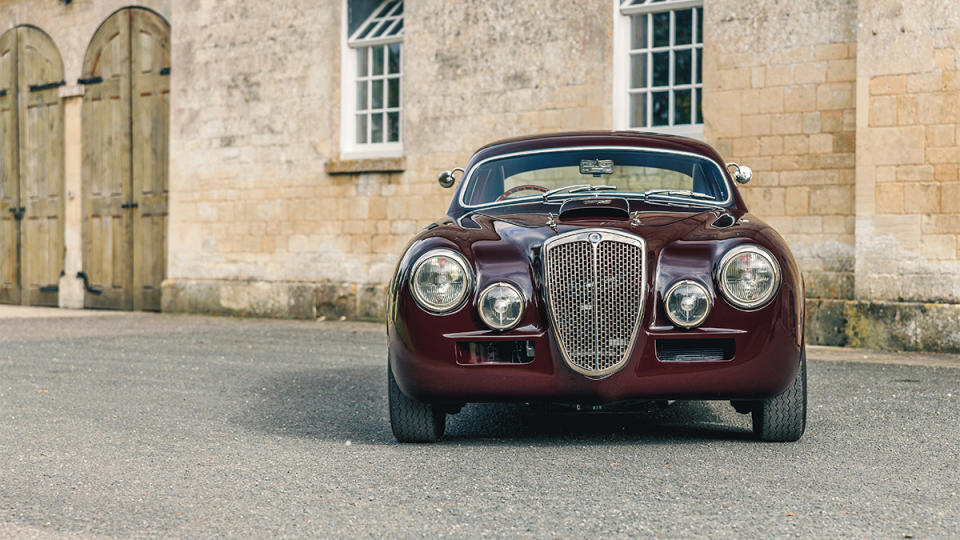
Located in a picturesque lakeside village in the Cotswolds region of England, Thornley Kelham is one of the U.K.’s most assiduous and imaginative coachbuilders. Founded by Simon Thornley and Wayne Kelham in 2008, the atelier took its first car to Pebble Beach in 2014 and has restored several international concours winners since. It’s also creating a unique line of restomods inspired by motorsport and the custom community.
First known as a Lancia specialist, Thornley Kelham now has expansive workshops that are replete with various automotive exotica, either fully clothed or stripped to bare metal. On a typical day, you might spot a rally-spec Lancia Stratos, a prewar Bugatti, or a Lamborghini Countach.
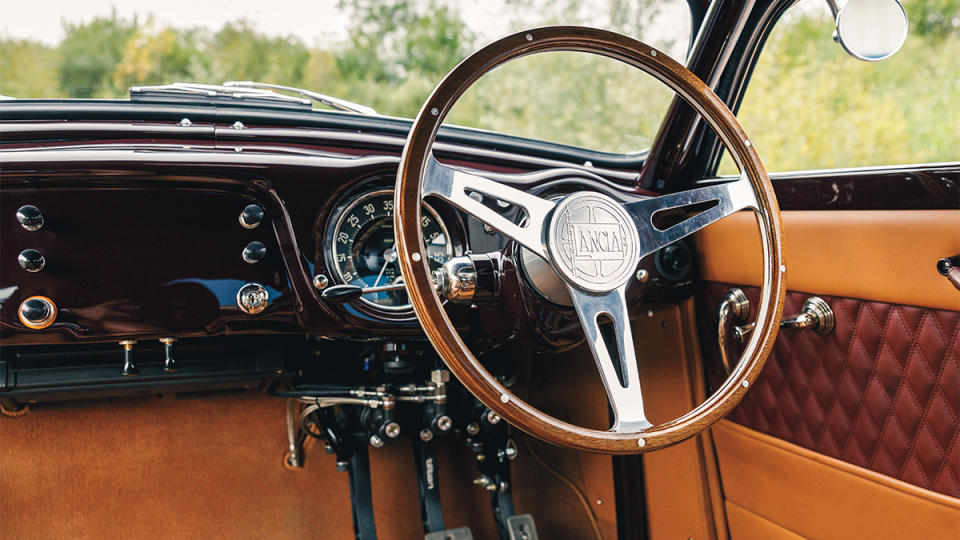
Classic automobiles are resurrected using traditional methods and tools as well as cutting-edge tech. The process often begins with a 3-D scan of a template vehicle, followed by the production of a full-size buck on which to form the body panels, which are shaped by hand using a wheeling machine. Engines are rebuilt to offer significant power increases and run on modern fuels, while interiors are trimmed in anything from Connolly leather to Alcantara.
A comprehensive, better-than-new restoration can take up to 4,500 hours—as was the case for the award-winning Bizzarrini 5300 GT Strada owned by Guy Berryman of the band Coldplay. But the team’s craftwork is increasingly being applied to modifying classics, such as the Lancia Aurelia B20 GT “Fuorilegge” (Italian for “outlaw”) that I took for a jaunt through the surrounding countryside.
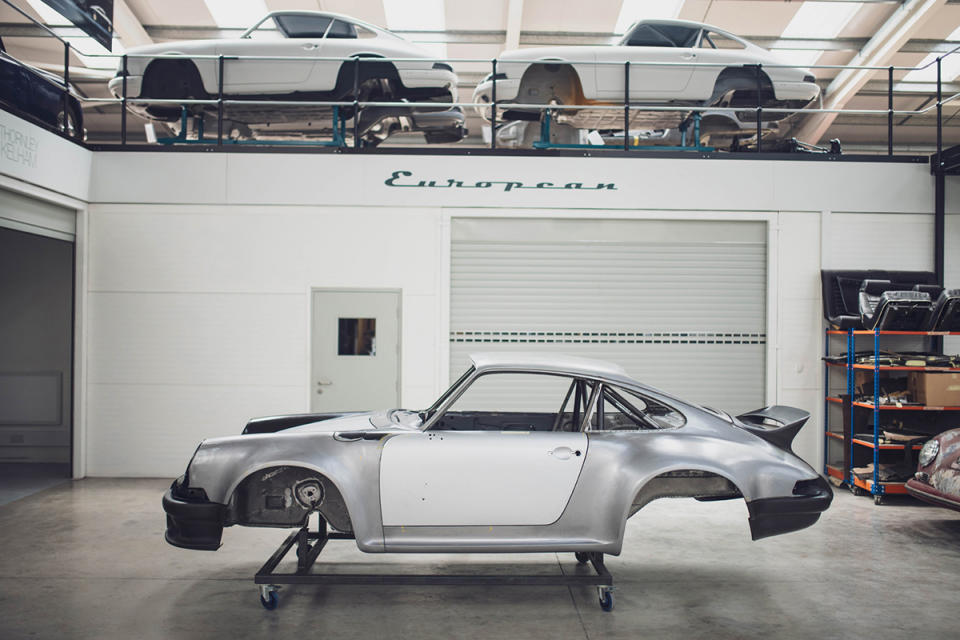
The car’s hot rod–style roof chop may seem sacrilegious to some, but the low-slung Lancia is based on an actual Carrera Panamericana racer that was also lowered in period. With a rebuilt sliding-pillar suspension and a throaty, uprated V-6 on throttle bodies, it preserves the latent character of the initial model, then adds a generous helping of SoCal “outlaw” attitude via its nonconformist restorations.
The outfit’s European series, currently in development, includes reinterpretations of the Jaguar XK, Porsche 356, and bygone 911s—the latter pitched as “a driving experience balanced between a GT3 RS 4.0 and the original 2.7 RS.” And though they may not abide by all the rules decreed by concours purists, they’ll make many a collector’s most-wanted list if they manage, as Simon Thornley puts it, to “build on the personality and essence of the originals.” —Tim Pitt
Best of Robb Report
Sign up for Robb Report's Newsletter. For the latest news, follow us on Facebook, Twitter, and Instagram.

